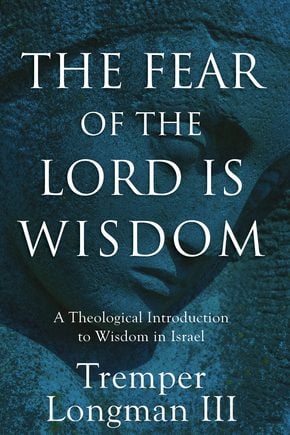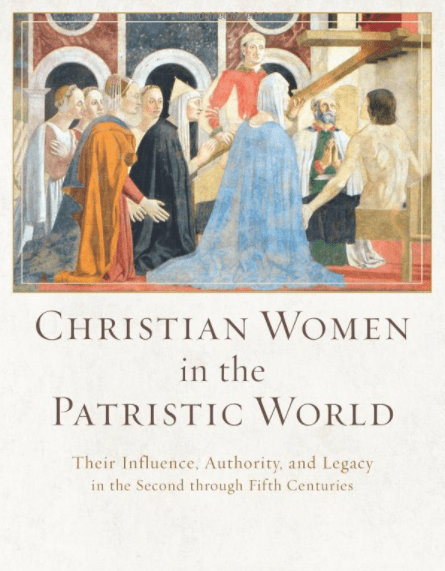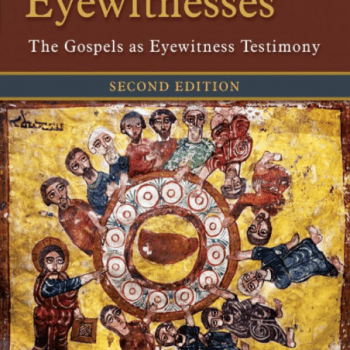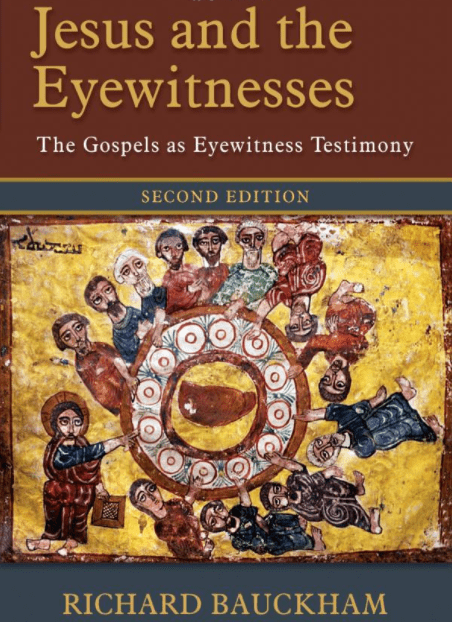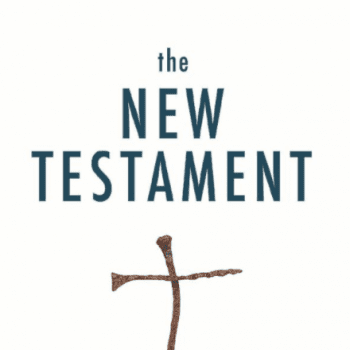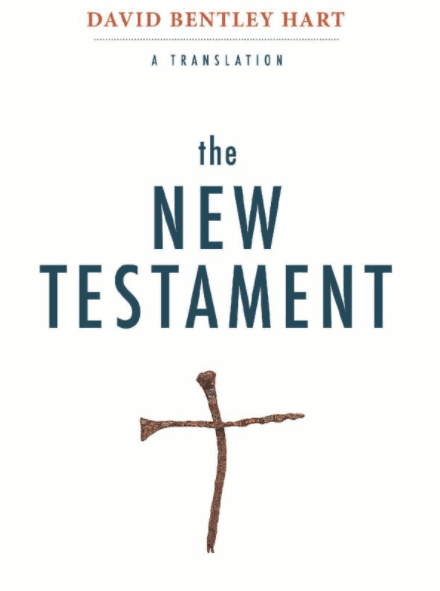By Jeremy Berg
I [Jeremy] just listened to a great discussion about God’s glory, Reformed theology and the Nashville Statement on theTheology on Mission podcast with David Fitch and Geoff Holsclaw. The best takeaway line was “God’s glory is not just about God, nor about us, but God with us.” The conversation reminded me of a piece I wrote on the “God-centered vs. Man-centered” debate some time ago. Enjoy!
—————
“The glory of God is man fully alive.”
-St. Irenaeus
Why do so many Christians, notably conservative Evangelicals and Reformed brothers and sisters, often put the glorification of God at odds with human attempts at excellence? Does striving for greatness always lead to human pride and undercut the magnification of God? Does a strong focus on the needs and concerns of human beings always result in a lack of focus on God as the center of all? Must one think less of himself in order to think more of God? Does Scripture lift God up by bringing human beings down?
In the background of all of these questions lies a larger, more foundational debate over our understanding of the nature of God, the nature of Man and their relationship. I am referring to the misguided line of thinking I hear so often, especially in more Reformed circles, that people either have a man-centered or God-Centered theology, view of the gospel, approach to Christian faith, etc.
When talking about different churches or pastors, I have had such people ask, “Does that church preach a man-centered or God-centered gospel?” Or, “Oh, I don’t like that pastor; they have a man-centered theology.” What is behind this?
I believe this distinction and concern is valid and helpful to a degree, but often gets pushed too far, leading to a confused, false either-or view of God, human beings and the gospel.
You can also find a more head-on critique from Ben Witherington in a post entitled “For God So Loved Himself: Is God a Narcissist?” Witherington’s concern is that God is sometimes
“presented as a self-centered, self-referential being, whose basic motivation for what he does, including his motivation for saving people, is so that he might receive more glory. Even the sending of the Son and the work of the Spirit is said to be but a means to an end of God’s self-adulation and praise.”
This is a significant issue and deserves careful reflection and a more nuanced understanding of the relationship of God and his human image-bearers.
In this essay I will unpack some loose thoughts on both the validity of the man-centered vs. God-centered concern and then offer some healthy push back on the fuzzy, over-extension of this line of reasoning. I see a distortion of both the character of God and what it means for human beings to glorify God.
SOME REASONS BEHIND THIS CONCERN
Many fears and factors stand behind this debate. Four worthy of mention include (1) scriptural mandate, (2) prosperity and self-help teachings, (3) strong views of human depravity, and (4) a particular, popular understanding of the supremacy of God.
1. Scripture. Scripture clearly demands that we deny ourselves in order to embrace God, that we must decrease so Christ can increase, that the world is in ruin because of humans have taken God off the throne and replaced him with other idols—self-lordship being the most popular (cf. Rom 1:23). Thus, there is an appropriate concern to heed such foundational scriptural warnings to keep God at the center of our affections and on the throne of our lives.
2. Prosperity & Self-Help Teachings. The widespread influence and propagation of the prosperity gospel has indeed distorted the Christian faith, turning it into a human-centered quest for personal health, wealth, power and prosperity. This teaching is all about “me” and God is little more than a cosmic vending machine waiting on our next request. Similarly, others focus too heavily upon self-help moralism that God takes a backseat to self-improvement and a deistic moralism. We must guard against these “man-centered” teachings; but in doing so, many end up going too far in the other direction. More on that below.
3. Views of Human Depravity. Looming in the background of this man-centered vs. God-centered line of reasoning is the great Reformation concern that some will give human beings too much credit when it comes to progress and growth in the faith. The Pelagian vs. Augustine debate over the extent of human depravity also influences this debate. We want to give God all the glory and all the credit for saving faith. In clinging hard and fast to the doctrine of “Total Depravity,” many develop such a low view of humanity that we are nothing more than worms, “snow covered dung” as Luther put it, and therefore incapable of doing anything of any value—especially in relationship to faithful living.
Must a strong view of human depravity always lead to such a low view of human capability? I certainly do not think so. But this low view of humanity exercises huge influence over those adamantly opposed to any “man-centered” thinking.
4. A Particular View of ‘The Supremacy of God’. Perhaps there is no greater influence popularizing the strong either-or thinking of the “man-centered vs. God-centered” question than John Piper’s ministry which so reverently emphasizes “the supremacy of God/Christ” in all things. Piper, who himself is heavily indebted to John Calvin and Jonathan Edwards in this respect, has a massive following and readership who are the primary propagators of this anti-man-centered rhetoric I am addressing. Let me state clearly right now that I respect and appreciate John Piper and his Desiring God ministry. He constantly challenges me and my theology and keeps my nose buried in the text of Scripture.
Yet, at the end of the day, I simply disagree with Piper on some significant theological issues and emphases. We need not go into those issues here since my current purpose is merely to point out that Piper’s teaching often lead his less astute and less nuanced followers toward a lopsided view of God’s relationship with human beings that overplays God’s supremacy in a way that undervalues God’s human image-bearers.
IS GOD AN IDOLATER?
Here’s a big question under consideration: Is God himself man-centered or God-centered? One significant conviction of John Piper and his followers is that God himself is the model of perfect, God-centered affections. As Piper puts it:
God is central and supreme in His own affections. There are no rivals for the supremacy of God’s glory in His own heart. God is not an idolater. He does not disobey the first and great commandment. With all His heart and soul and strength and mind He delights in the glory of His manifold perfections. The most passionate heart for God in all the universe is God’s heart.”
This bold claim has not gone uncontested. Is God really God-centered? Is this necessarily an either-or question? Many would argue that what makes God so Holy and perfect — so unlike human beings — is precisely that he is the only being in the universe who is not subject to self-centeredness. He is the only One completely free from any hint of self-absorption.
The God revealed in the person of Jesus Christ demonstrated that God’s true nature is completely other-oriented, capable of unlimited self-giving love toward others. God’s very nature is agape love and therefore God cannot help but be an ever flowing spring of self-sacrificial, other-oriented love. While finite human beings seek and even need to be loved in return for their love extended, God stands perfectly self-sufficient in the inter-trinitarian community of love so that He is absolutely free from any “need” for others to return His love.
How about the gospel we preach? I often hear people inquiring about the legitimacy of a particular pastor or church by asking, ‘Do they preach a man-centered gospel?” or “Is that a God-centered or man-centered church?” The question “Is the gospel man-centered or God-centered?” needs a lot of clarification and definition.
Those who argue passionately for a God-centered gospel usually are primarily concerned that God is given the glory and credit for the human rescue operation the New Testament calls the gospel. Moreover, they would also emphasize that the central result of salvation would be that the redeemed person now has God as their supreme treasure at the center of their affections to use Piper’s language. I agree with all of this. But…
I still believe the gospel, which is the good news regarding God’s rescue plan to redeem God’s wayward image-bearers and bring them back into relationship with Himself, is thoroughly man-centered as well. How can it not be? The gospel is all about the rescue of man—yes, for the glory of God, but still with human beings as the target of this saving grace. The gospel is the good news that God so loved the world, i.e., God’s heart was so intently focused upon the well-being of his beloved creatures, that he came for their rescue.
To illustrate, if a father watches his infant daughter fall into the swimming pool and then comes to her rescue, would the news headline the following day be wrestling with the question of whether this rescue story is either “child-centered” or “Father-centered”? It’s a silly question.
The good news headline would center around both the child as the object of rescue and the Father as the hero who gets the glory. Both share center stage in this rescue story though playing very different roles. The forced either-or language just confuses the situation. I’m equally confused when people use this language in regards to the gospel or theology.
Is it not reasonable to conclude from Scripture and the revelation of God’s character in the person of Jesus Christ that God is incredibly man-centered in his affections to a degree that puts all human love and affection, so marred by selfishness and pride, to shame and leads one to fall to their knees in the worship and magnification of such a Holy, other-focused Loving God? I agree with Piper that “God is not an idolater”, yet I don’t believe its because he keeps the first and greatest commandment as Piper insists.
I believe there is a confusion of categories here on Piper’s part, and the Creator is simply not subject to the first commandment to love Himself. Why? Human beings must love God above all (and avoid idolatry) because they are finite and incapable of loving from within themselves. God is infinite and self-sufficient in his own being, and therefore does not need to find life in a greater source outside himself—thus, God could never be an idolator in the sense that humans can. That option just doesn’t exist for the one, true God.
But I’ve gone far enough here to show that there is reason to think that the “man-centered” vs. “God-centered” logic is misguided and the discussion is in need of more nuance.
HOW IS GOD GLORIFIED?
Another central question under consideration in this debate is: How is God glorified by human beings? Our chief end is to glorify God with our lives. Our chief temptation, from Genesis 3 onward, is to “exchange the glory of the immortal God” for lesser glory—especially glorification of man (cf. Rom. 1:23). I agree with this whole-heartedly. But how exactly is God most glorified by his human image-bearers?
I believe John Piper again offers some solid help in getting us started but then downplays or even distorts the other side of the coin. (Note: I am using Piper as a representative of a much larger contingency of Reformed thinkers who stand largely in the shadow Jonathan Edwards and his theological kin.) Piper rightly emphasizes that “God is most glorified by us when we are most satisfied in Him.” Our satisfaction in God entails making God our heart’s greatest treasure and Christ our supreme Lord. So far, so good.
Yet, when it comes to the particulars of how one glorifies God—how one demonstrates that Christ is Lord, shows God to be our supreme treasure—we start to slip into unhelpful either-or rhetoric again. My conviction is that God is most glorified in us when we, God’s image-bearers in the world, are living most in tune with God’s purposes for our lives, utilizing our God-given gifts and passions, flourishing in our God-directed pursuits, and accomplishing great things in the name of God and for the expansion of the Kingdom of God.
In other words, human beings glorify God not by curling up in a helpless, hopelessly depraved blob that is relieved that God is great enough for the both of us. No, the Creator is magnified when his creatures are fully functioning as He originally intended them to. The computer programmer is most pleased when the program works, the coach is most thrilled when the team plays well and wins, the teacher is most honored when the students learn and God is most glorified when human beings flourish in their God-given potential in a proper relationship with Him.
My point is that human attempts at greatness is not in opposition to glorifying God. In fact, the two are thoroughly intertwined. Here’s an example of this misguided thinking in practice, chosen quite randomly and with no personal bone to pick with the individual involved. Morris Chapman, former President of Southern Baptist Convention, once made the following challenge to the SBC regarding the future mission of the church:
“Going beyond the work of God’s Spirit in salvation, I believe the time has come to stop talking of “what made the SBC great” or “what will make the SBC great again.” All these questions are in direct competition with the glory of the Lord Jesus Christ. Our chief aim, or first and greatest concern, our most passionate commitment must be to ask this question “What will give Him the glory?”
Chapman no doubt wants the sole focus and driving motivation for the direction the SBC to be on glorifying God. Yet, he seems to view the desires of current leadership to be “great” as dangerous and, shockingly, “in direct competition with the glory of the Lord Jesus Christ.”
Really? Is he suggesting “all” talk of being a great church, making great efforts to accomplish great things, to have great kingdom-advancing impact and greater witness in the world for the future “are in direct competition” with the task of glorifying Christ?
I may be misunderstanding Chapman here, but his choice of words here seems to suggest a line of reasoning that would place the question “What will give HIM the glory?” in direct competition with questions about how the SBC can be great.
I believe they are two sides of the same coin. What will give God most glory? My answer: Be a great church! That is, strive with all our might, cooperating with the power of the Spirit and in alignment with God’s will, to be a great church with an even greater witness than in the past.
Human greatness is only truly great when done in cooperation with God for the glory of God. But human mediocrity done in the name of God and for the glory of God is still only mediocre—even if God redeems it, multiplies it and uses it for his greater purposes.
But God is most glorified by us when we are striving for Kingdom greatness in Him, through Him and for Him.
SUMMARY & CONCLUSION
So, where does this leave us on the tired old debate over so-called “man-centered” theology vs. “God-centered” theology? We must set the record straight on the main and plain things. And on the deeper complexities we must seek greater clarity and nuance in our rhetoric.
I have attempted to expose the false either-or in much of the talk of man-centered vs. God-centered gospels, theology, approaches to faith, etc. I have raised the following points:
First, the focus of the gospel, or good news concerning God’s rescue plan for humanity, is centered upon human beings as the object of God’s love and affections, and centered on God in Christ as the merciful and loving rescuer who is worthy of our worship, praise and obedience. So, both God and man share center stage in the drama of redemption, though they play very different roles!
Second, God himself is the only self-sufficient being in the universe who is absolutely free from self-centeredness. God’s character revealed in Jesus Christ is purely, extravagantly other-focused. God is love—and the source of this infinitely flowing fountain of out-pouring agape is the inter-trinitarian affection shared between the Father, Son and Holy Spirit. Because God is infinite and completely self-sufficient, he can love endlessly, unconditionally, self-sacrificially for all eternity without “need” of reciprocation. Human beings are the recipients of this never ceasing outpouring of God’s love. This too is the supremacy of God on display.
Third, the chief purpose of human beings is to glorify God. God is most glorified when human beings are most satisfied in Him. Yet, our satisfaction in God should lead us to live lives of Kingdom-centered greatness as we utilize our unique gifts and passions given to us by God for the purposes of furthering the Kingdom of God in the world.
Thus, human greatness (in right relationship to God) is not in opposition to the glorification of God, but very much a part of it. In other words, God is most glorified when his creatures live great lives in Him, through Him and for Him. But great lives bring greater glory to God than sub-par or wasted lives.
Fourth, connected to #3, holding to extremely high views of human depravity, or “worm theology”, does not necessarily result in the magnification of God as is often believed. It can actually take away from the glory of God insofar as His handiwork is shown to be damaged goods unable to function as God designed them. On the other hand, many find a much more positive view of human beings in Scripture and argue that the gospel itself is the greatest proof that human beings are of great value and highly esteemed in God’s eyes.
“What are mere mortals that you should think about them, human beings that you should care for them? Yet you made them only a little lower than God and crowned them with glory and honor” (Psalm 8).
Apart from divine grace we are without hope but not without value. Our value is derived from the One in whose image we are made. God is in the business of redeeming, restoring and empowering his image-bearers so they can more accurately reflect and magnify the greatness of the Creator.
In summary, we have questioned the legitimacy of the either-or in this debate. We have challenged the notion that God is at the center of His own affections. We have highlighted the way one’s view of human depravity will determine how one views the relationship between human greatness and God’s glory. We have suggested that these two are not in competition, but rather they go hand in hand. We have argued that God is most glorified when His human image-bearers are flourishing in proper relationship with their God.
With these initial thoughts on the discussion table, let me just close with a reminder that this has been an unpolished, ongoing thought experiment. May we continue to seek the truth in these matters in a spirit of grace, love and humility, always taking the attitude of the apostle Paul who at the end of the day could only cry out in awe
“Oh, the depth of the riches of the wisdom and knowledge of God! How unsearchable his judgments,and his paths beyond tracing out! “Who has known the mind of the Lord? Or who has been his counselor?” “Who has ever given to God, that God should repay him? For from him and through him and to him are all things. To him be the glory forever! Amen” (Romans 11:33-36).
Soli Deo Gloria!
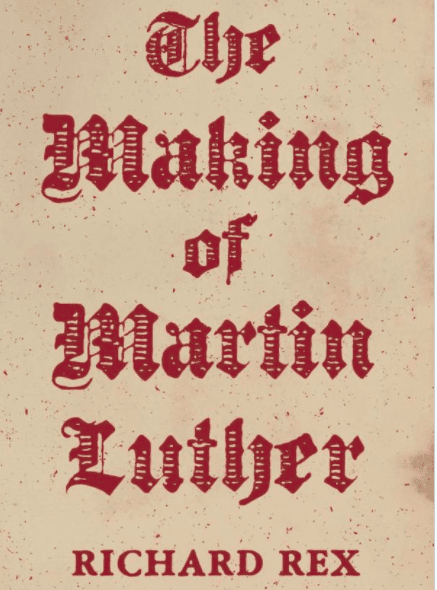 In Richard Rex’s new book, The Making of Martin Luther, we are treated to an accessible opening study of the best scholarship on the claim (and myth) that Martin Luther nailed (or used wax, as a friend mentioned to me) his 95 theses to the door of the church in Wittenberg to establish a public disputation about them. Rex says, “Hold on, folks, that story symbolizes Luther’s significance but it almost certainly didn’t happen.”
In Richard Rex’s new book, The Making of Martin Luther, we are treated to an accessible opening study of the best scholarship on the claim (and myth) that Martin Luther nailed (or used wax, as a friend mentioned to me) his 95 theses to the door of the church in Wittenberg to establish a public disputation about them. Rex says, “Hold on, folks, that story symbolizes Luther’s significance but it almost certainly didn’t happen.”
